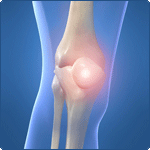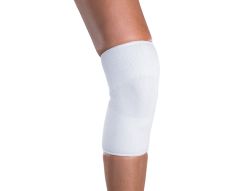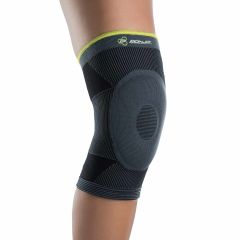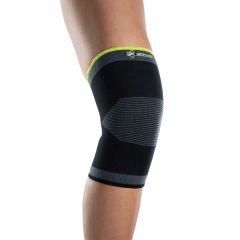Bursitis of the Knee

The simplest explanation of bursitis is to begin at the beginning. A bursa is a sac that is closed, and filled with fluid. The bursa is a smooth surface that helps to reduce friction between the body's tissues, and the largest bursae (plural for bursa) are located in the shoulders, hips, elbows and knees. When the bursa becomes inflamed, which often happens following an injury to the joint, it is known as bursitis, and it can be really painful.
Knee bursitis is particularly painful. There are three bursae in the knee, and the most commonly-seen knee bursitis can be found in the prepatellar bursa, which is right over the kneecap. This can easily become inflamed, especially when one is in a kneeling position for long periods of time. The conditions known as “housemaid's knee”, “roofer's knee” and “carpet layer's knee” are all actually knee bursitis. Depending on the severity of the bursitis, it can cause pain and swelling, but not nearly as much pain as arthritis. Patients often report that the knees are warm, red and tender, and many say they feel stiffness in the knee joints, as well as pain while moving.
The other two bursae in the knees do not seem to cause as many problems for people, but they should not be overlooked. The second bursa is called the infrapatellar bursa, and it is located just under the kneecap, and below the tendon that attaches the thigh muscle to the kneecap. Most injuries to this bursa involve jumping and are often referred to as “jumper's knee”. The third bursa is the anserine bursa, and it is located on the lower inside of the knee. Inflammation to this bursa is often seen in middle-aged women, and symptoms include pain in the back of the knee, especially when climbing stairs. Also called anserine bursitis, this condition is also common in those who are overweight.
Causes of Knee Bursitis
Bursitis is often caused by an injury to the front of the knee, but can even be caused from being a kneeling position for too long a period. Bursitis of the knee occurs when the bursa, which is a closed sac filled with fluid, becomes inflamed due to the injury or trauma.
Symptoms of Bursitis of the Knee
The pain associated with bursitis of the knee is not nearly as severe as other types of knee pain such as arthritis, but it is annoying nonetheless, particularly if the sufferer must be in a kneeling position, which can be quite painful. This is a condition that can cause swelling, pain and stiffness. Unlike other types of knee pain, there is usually no problem with the range of movement. Symptoms of septic bursitis are similar, but patients may also experience fever.
What is the Treatment?
General
Depending on the type of bursitis, the treatment methods are going to be somewhat different. With aseptic bursitis, the most common courses of action include ice packs, rest and anti-inflammatory and pain medications. Sometimes, a patient may require a draining of the fluid in the bursa, which is done with a syringe and is often done right in the doctor's office. If the bursitis is septic, the patient may need to have antibiotics to treat the infection, and the bursa may need to be drained a few times to remove all of the inflammation. Sometimes, patients require surgical drainage and removal of the bursa.
Light Therapy
There are also many non-traditional forms of treatment for bursitis of the knee that are very effective. One such treatment is light therapy, which can help reduce pain from injuries and conditions such as bursitis. Many people visit therapists to have light therapy treatment, often at a very high cost. If light therapy is something that you are interested in to treat bursitis of the knee or any other painful condition, you may want to consider buying your own machine.
Bracing
Another way to alleviate pain is to wear a knee brace for bursitis. A knee brace will offer warmth and compression which can help with pain relief. It can also help your knee with stability issues.
Home Remedy
Home remedies include R.I.C.E. Rest, ice, compression and elevation.
Bursitis is not one of the most painful conditions in the knees, but it does need to be looked after to ensure that it does not get worse and cause problems later in life. If you think you may have knee bursitis, check with your physician to make sure, and then find out which treatment method is best for you.
PROTECTION & SUPPORT FOR KNEE BURSITIS
View all Braces & Supports for a Knee Bursitis







